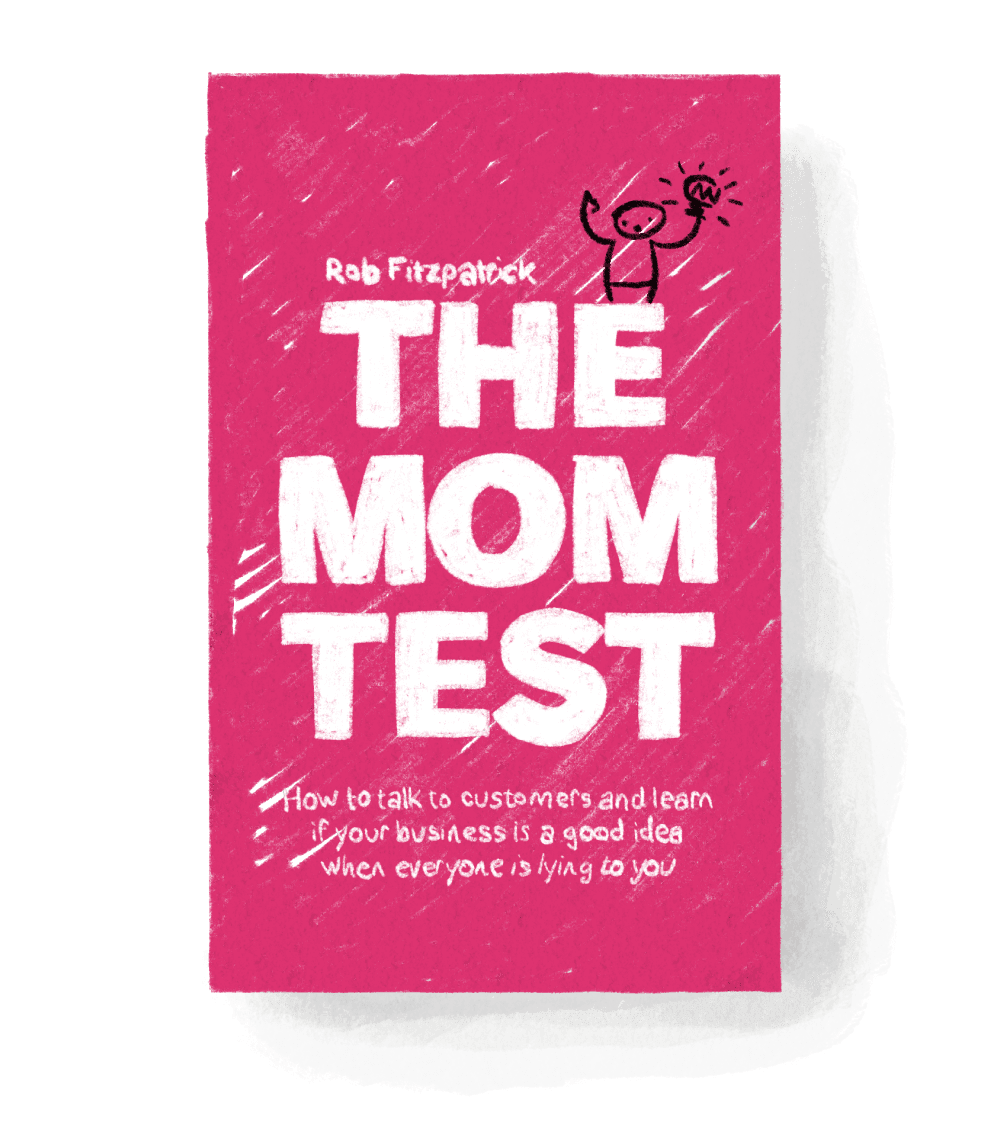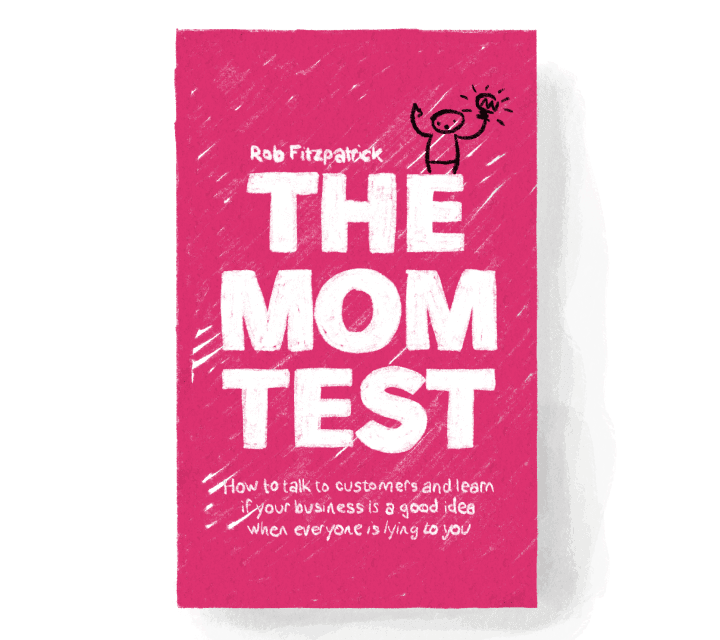The Mom Test is a set of simple rules for crafting good questions that even your mom can't lie to you about.
Book Summary of The Mom Test
The Mom Test is a method of uncovering the true and honest desire behind the problems they face. If you're looking for honest insight from a potential customer, your goal should not be about asking questions about your specific solution but rather about the problems they're having, and what they're doing to fix them.
We're at constant odds when asking others for helpful feedback. We have a desire to be told what we're doing is good and important, listening for empty compliments. On the receiving end, there is a strong desire to lie and support whatever it is we're working on.
The Mom Test is designed to elicit honest and true feedback by asking better questions.
Book Notes of The Mom Test
You shouldn’t ask anyone whether your business is a good idea.
It’s not anyone else’s responsibility to show us the truth. It’s our responsibility to find it. We do that by asking good questions.
The Mom Test is a set of simple rules for crafting good questions that even your mom can't lie to you about.
The measure of usefulness of an early customer conversation is whether it gives us concrete facts about our customers’ lives and world views.
If you just avoid mentioning your idea, you automatically start asking better questions. Doing this is the easiest (and biggest) improvement you can make to your customer conversations.
The Mom Test: Talk about their life instead of your idea Ask about specifics in the past instead of generics or opinions about the future Talk less and listen more
Rule of thumb: If they haven't looked for ways of solving it already, they're not going to look for (or buy) yours.
"Would you pay X for a product which did Y?" Bad question. The fact that you’ve added a number doesn’t help. This is bad for the same reasons as the others: people are overly optimistic about what they would do and want to make you happy.
Let’s fix it: As always, ask about what they already do now, not what they believe they might do in the future.
Common wisdom is that you price your product in terms of value to the customer rather than cost to you. That's true. And you can't quantify the value received without prodding their financial worldview.
Another way to fix it, if you’re far enough along, is to literally ask for money. If you have the deposit or pre-order in hand, you know they’re telling the truth.
Rule of thumb: People stop lying when you ask them for money.
"Where does the money come from?" Good question. This isn't something you would necessarily ask a consumer (though you might), but in a B2B context it’s a must-ask. It leads to a conversation about whose budget the purchase will come from and who else within their company holds the power to torpedo the deal.
"Who else should I talk to?" Good question. Yes! End every conversation like this.
"Is there anything else I should have asked?" Good question. Usually, by the end of the meeting, people understand what you’re trying to do. Since you don’t know the industry, they’ll often be sitting there quietly while you completely miss the most important point. Asking this question gives them a chance to politely “fix” your line of questioning. And they will!
The questions to ask are about your customers’ lives: their problems, cares, constraints, and goals.
It boils down to this: you aren’t allowed to tell them what their problem is, and in return, they aren’t allowed to tell you what to build. They own the problem, you own the solution.
There are three types of bad data:
Compliments Fluff (generics, hypotheticals, and the future) Ideas
With the exception of industry experts who have built very similar businesses, opinions are worthless. You want facts and commitments, not compliments.
You don’t need to end up with what you wanted to hear in order to have a good conversation. You just need to get to the truth.
Rule of thumb: Compliments are the fool’s gold of customer learning: shiny, distracting, and worthless.
While using generics, people describe themselves as who they want to be, not who they actually are. You need to get specific to bring out the edge cases.
When you hear a request, it’s your job to understand the motivations which led to it. You do that by digging around the question to find the root cause. Why do they bother doing it this way? Why do they want the feature? How are they currently coping without the feature? Dig.
Questions to dig into emotional signals:
“Tell me more about that.”
“That seems to really bug you — I bet there’s a story here.”
“What makes it so awful?”
“Why haven’t you been able to fix this already?”
“You seem pretty excited about that — it’s a big deal?”
“Why so happy?”
“Go on.”




